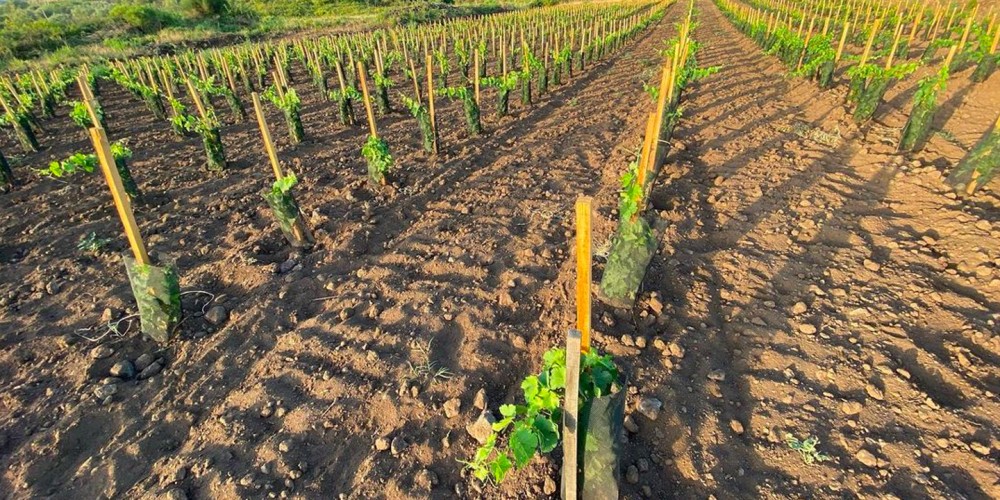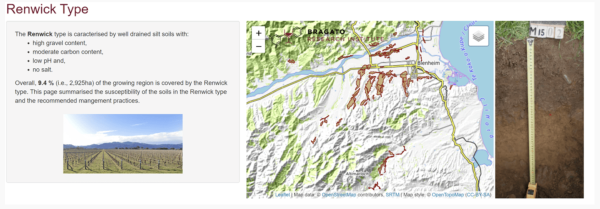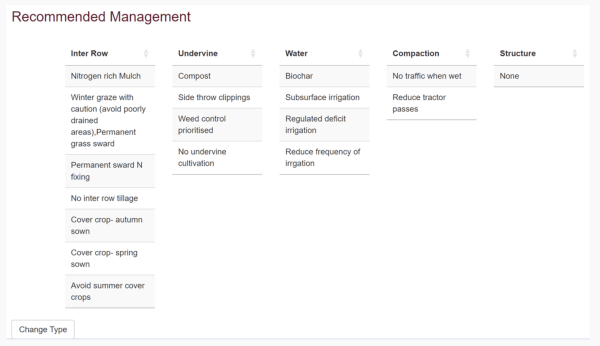Building vineyard soil health
Added one year ago
By Dr Seth Laurenson, Soils & Sustainability Advisor, Bragato Research Institute

Soil is the foundation of our industry, and maintaining soil health is a priority focus for Bragato Research Institute (BRI). Grape growers tend to have a close relationship with the soil because it influences the health of grapevines and the character of resulting wines. There is also increasing awareness that soil health is declining in many vineyards across New Zealand.
In 2023, BRI conducted a survey to identify practices that are being used by grape growers to build soil health. The survey identified techniques ranging from irrigation management, reducing compaction, fertilisers, to cover crops, mulching or composting (see full survey results in this article). However, soil health is a complex issue to manage because soil characteristics, climate and the grower’s own goals all vary on a sub-vineyard scale. When faced with this complexity, many growers are uncertain about the most effective management practices for their specific soil profiles.
The survey identified that 96% of growers want more information to support improved soil health. Specifically, respondents wanted this information to be more specific to their location and the potential issues that might be limiting vine performance and recommendations to be focused more heavily on these unique circumstances.
Based on this feedback, BRI, in collaboration with Plant & Food Research and the Marlborough District Council, has developed a ‘proof-of-concept’ that can guide site-specific soil management practices to promote soil health. The proof-of-concept tool provides soil property information on a specific parcel of land and recommended management techniques based on the soil’s susceptibilities to conditions affecting vine performance.
We aim to provide a tool and knowledge to help grape growers make rational and effective changes within their businesses. The proof-of-concept tool is simply to demonstrate the concept and is not perfect at this stage. We are currently seeking feedback on this proof-of-concept so that we can develop something that is valuable for the wine industry in meeting its goals of enhancing soil health.
The proof-of-concept tool
The tool was initially developed for the Marlborough/Ward area. We assessed 16 unique environments (Typologies) based on a series of soil properties that influence vine growth and performance. The 16 Typologies represent the diversity of soil-related growing conditions across Marlborough. The 16 different Typologies are listed in Table 1 and are shown in the map interface through coloured shading.
Currently, the tool relies on relatively coarse-scale soil mapping. Growers will find that soils will often vary within the mapped Typology zone. Our goal is to refine both the Typology mapping and our understanding of the variation within polygons with feedback.
How it works
To begin, users pinpoint their vineyard location and select a land parcel of interest. They are then presented with detail regarding the property, including the distribution of different Typologies that are present across the site and the proportions of each, as a % of the total property size.

For example, the image above shows that this property is comprised predominantly of the Renwick type, followed by Dashwood, with lesser coverage of the Western Wairau.
These soils contrast significantly in their characteristics. Renwick soils are typified by deep loam Brown soils with good drainage properties. The Dashwood is typified by Pallic soils that have imperfect to poor drainage properties. The Western Wairau is typified by Recent soils, with high to very high stone content derived from rivers.

For each Typology, users can click into general information on typical properties, their distribution and frequency across Marlborough. A soil profile image and landscape photo are also included so growers can relate their knowledge with what is being predicted as the soil type within the databases we have used.
Understanding the soil and recommended management techniques
Each Typology description also contains information on susceptibilities and limitations that affect vine growth and performance. Below is the susceptibility of the Dashwood type. The soil is at high risk of soil compaction, yet moderate risk of being limited by shallow rooting depths (i.e., due to rooting barriers such as dense subsoils or shallow water tables) and poor nutrient supply. However, the risk of growth limitations due to poor water retention is low (i.e., sufficient water can be stored in this soil). This data has been created using the Typology data and expert opinion. Detailed information relating to each Typology will grow as we continue to receive feedback from growers reviewing the tool.

Next, the tool identifies recommended management practices that are most appropriate for improving soil health at their location based on the Typologies present on their property.
Here, the management practices suitable to the Renwick soil are shown. The selection of management practices was collated from the recent survey of vineyard management practices used by growers to promote soil health. BRI undertook this work and a summary is available in the New Zealand Winegrower magazine (June-July 2024 issue). We assigned the management practices to individual Typologies using expert knowledge. For the proof-of-concept, we’ve been able to develop a dataset of current practices and options that can be assigned to a given type. However, we expect this data to be refined/expanded as we continue to receive feedback on this initial prototype.

Next steps
In the near future, we aim to work with industry to establish an agreed soil health monitoring protocol specific to grape growing. We also aim to develop Typology classes for wine regions across New Zealand and develop a matrix of good management practices to support all vineyards. Doing this will allow us to develop a live Decision Support Tool and implement and measure the effects of various management practices on soil health outcomes. This will ultimately help the industry meet its sustainability goals.
If you have feedback on the current proof-of-concept or the future goals, we’d be very pleased to hear from you. Get in touch by emailing seth.laurenson@bri.co.nz.
Join the conversation
Be the first to leave a comment.
Leave a comment
All comments are reviewed before they are published on the website. Your email address will not be published.



Community Engagement and Knowledge Sharing Strengthen the Carbon Positive Project


Farewell to Trustee Phil Schofield – A Foundational Leader of the HBFFCT

